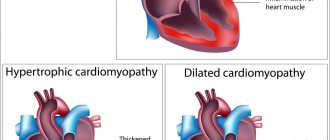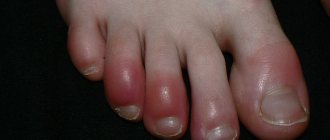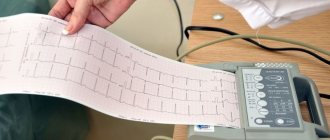Anal bleeding is a condition in which blood in any form is released from the anus. Blood loss of this kind is very rarely severe. Their relevance is associated not so much with the danger to life, but with the widespread prevalence and discomfort that arises when they appear.
But do not forget that anal bleeding is just a symptom. It often becomes the first manifestation of dangerous diseases of the large intestine and rectum. You can roughly determine the nature of bleeding from the anus by determining its features.
Causes of bleeding from the anus
If you notice blood on toilet paper after bowel movements, even if the process of bowel movement occurs without pain, you should definitely consult a proctologist for advice in order to establish the cause of the bleeding, start treatment in a timely manner and avoid possible complications.
Why does blood appear from the anus after stool in both men and women:
- A fairly common factor is hemorrhoids (enlargement of the veins of the rectum). Scarlet blood appears from the anus during defecation.
- Anal fissure is the second most common cause of rectal bleeding. The disease is characterized by a burning sensation during bowel movements, sometimes accompanied by acute pain (patients describe it as cutting and then squeezing). Bloody discharge appears in both small and copious portions.
- Inflammatory diseases of the colon.
- The presence of benign formations (polyps). A characteristic symptom is the discharge of blood from the rectum after defecation. The blood is darker, often with mucus.
- The presence of a malignant tumor of the rectum. Blood of different colors may be released. Quite often, the blood released does not differ in any way from the blood that is released, for example, from hemorrhoidal tissue. And if the presence of hemorrhoidal disease only worsens the quality of life (hemorrhoidal tissue never degenerates into a malignant tumor), then the presence of a benign formation or a malignant tumor can be harmful to health and life-threatening, which is why you should not try to independently determine the source.
Only a coloproctologist can determine the true cause of bleeding from the anus and select the appropriate treatment. Timely diagnosis allows for effective conservative and minimally invasive treatment.
When self-medication is dangerous
A serious condition is indicated by constant scarlet discharge. The doctor will make an accurate diagnosis based on the results of laboratory and instrumental diagnostics.
Urgent hospitalization will be required if, along with this, the patient has:
- Nausea, vomiting with blood.
- Hematomas that occur without tissue injury.
- Weakness, confusion.
- Pain in the abdominal area.
- Fever.
In such cases, attempts to cope with the problem on your own are unacceptable. The desire to wait for a doctor’s consultation at the clinic also poses a threat to the patient’s life.
After relief of dangerous symptoms, an examination is prescribed to identify the cause of the condition. The further treatment regimen will be determined by a specialist of the appropriate profile.
Discharge color and disease
- bright red, scarlet blood from the anus on toilet paper or underwear, drops at the end of a bowel movement (stool) - hemorrhoids or anal fissure;
- red color of blood during anal bleeding - cancerous tumor, intestinal polyp;
- dark blood clots - tumors of the distal colon, diverticulosis;
- cherry-colored blood from the anus - pathology of the colon;
- black, tarry stools - diseases of the stomach, duodenum and small intestine.
IMPORTANT!
Bleeding is a serious symptom, after the appearance of which you cannot postpone a visit to the doctor. Unfortunately, blood from the anus can cause diseases such as a tumor of the rectum or colon. And in the worst case, this tumor may turn out to be malignant. Blood can also occur as a result of injury to a polyp - a benign tumor. Long-term polyposis can be a sign of colon cancer.
Preventive measures
To avoid the appearance of bloody discharge in stool, basic preventive measures should be followed:
- Include foods that contain sufficient fiber in your daily diet. By eating cereals, vegetable dishes and fresh fruits, you can get rid of constipation and forget about anal bleeding.
- Drink at least 2 liters of clean water and freshly squeezed juices daily. Drinking plum juice will help prevent constipation.
- Timely bowel movements.
- Systematic performance of Kegel exercises.
The appearance of bloody clots in the stool should be a cause for concern. A timely visit to a doctor helps to cure most ailments quickly and without surgical interventions.
Bleeding pattern and disease
- Regular heavy bleeding not associated with bowel movements - diverticulosis, polyposis, Crohn's disease, ulcerative colitis, rectal or colon cancer;
- Blood mixed with feces - cancer of the rectum and colon;
- Bleeding with diarrhea - dysbiosis, irritable bowel syndrome;
- Discharge of blood with mucus or pus - internal hemorrhoids, rectal prolapse or polyp;
- Severe bleeding with mucus - proctitis, colitis, rectal cancer.
Make an appointment
Crohn's disease
Crohn's disease is a severe inflammatory disease of all layers of the intestinal wall. In this case, nodules called granulomas appear inside the intestinal wall. The disease cannot be completely cured, only achieving remission. Crohn's disease affects all parts of the gastrointestinal tract. The mucous membrane becomes covered with ulcerative lesions, the ulcers can deepen, pseudopolyps are formed, polyps and ulcers alternate with each other. When the disease becomes more complicated, fever, bleeding, abscesses, fistulas, and peritonitis appear. Characterized by abdominal pain, flatulence, weight loss, anemia, hypovitaminosis. The disease develops slowly over several years. With Crohn's disease, symptoms such as damage to the joints, the mucous membrane of the eyes, and inflammation of the lymph nodes appear.
Diagnosis and treatment
When faced with an intimate problem, especially such as bleeding from the anus during bowel movements, you can get confused, especially if you don’t know about the methods of diagnosing and treating such ailments or don’t understand which doctor to contact.
A proctologist or coloproctologist is a doctor who diagnoses and treats diseases of the colon, rectum and anus, as well as problems of the sacrum, coccyx and perineum. You should not postpone a visit to this specialist if there is blood from the anus after stool.
A proctologist will listen to complaints and the history of their occurrence, and to determine the cause of the appearance of blood from the rectum, he may perform the following procedures:
Digital examination of the rectum: a primary research method that makes it possible to assess the condition of the anus and identify possible pathologies in the form of neoplasms, anal fissures, uncharacteristic discharge, and bleeding.
After a digital examination, the coloproctologist, if necessary, prescribes further diagnostic methods using special equipment:
- Anoscopy. This is an examination of the last 3-7 cm of the rectum; it is in this area that almost half of the sources of visible bleeding are located. There are several types of anoscopes (straight, conical, with and without a cutout, transparent and not transparent), each of them is used strictly according to indications, but any of these types allows you to perform a full examination of the anal canal and lower ampullary rectum. Anoscopy is used when performing minimally invasive methods of treating hemorrhoids (ligation, sclerotherapy), as well as performing a number of surgical interventions (bipolar coagulation). As a rule, no preparation is required to perform diagnostic anoscopy; preparation is required for anoscopy for therapeutic purposes.
- Sigmoidoscopy or rectoscopy (RRS or RRS) is a diagnostic procedure using a special device with a camera. It makes it possible at the initial appointment to quickly and painlessly visually assess the condition of the rectal mucosa, identify the presence of mucosal formations and compression of the intestine. During rectoscopy, up to 20 cm of the intestine is examined (the entire rectum and the place of its transition to the sigmoid). Preparation is required for rectoscopy.
- Colonoscopy is the most informative method of examining the large intestine compared to others. It is carried out using a flexible fiber colonoscope equipped with a high-resolution camera that will show even the smallest sources of bleeding. The procedure is also prescribed for the purpose of endoscopic removal of colon formations. A colonoscopy is performed by an endoscopist.
The appropriate method of treating the disease is determined and prescribed by the doctor. You should not engage in self-treatment and neglect contacting a coloproctologist.
Blood streaks in stool
Regardless of the consistency of the stool, red “threads” in its composition indicate inflammation in the digestive canal. Provocateurs of the phenomenon can be:
- Parasites.
- Imbalance of microflora.
- Stomach flu.
- Dysentery.
The symptom cannot be ignored, especially if it is accompanied by loss of appetite, sudden weight loss, and nagging pain in the abdominal area. After all, streaks of blood can also be a manifestation of Crohn's disease, a tumor process, bleeding polyps, and diverticulitis. If you consult a doctor in a timely manner, the chances of a full recovery increase.
How to prepare for the examination?
The own research of specialists from the proctology department of the Altermed clinic made it possible to make a visit to a proctologist as easy and comfortable as possible. There is no longer any need to fast the day before and plan the procedure for the morning. In the proctology departments of Altermed, a way has been found to successfully cope with all these difficulties. This is Microlax bowel preparation.
The use of Microlax microenemas makes fasting unnecessary, does not require special equipment or premises, and saves a lot of time. The laxative effect occurs 5-15 minutes after administration of the drug. The quality of bowel cleansing is such that treatment can begin immediately after rectoscopy and anoscopy. If it is necessary to use during pregnancy and lactation, Microlax does not require special precautions.
The Proctology Clinic provides diagnostics using the most modern equipment. The best doctors in St. Petersburg - both men and women - and a delicate approach are at your service.
Tests for occult blood in stool
A painless, safe immunochemical method that detects hemoglobin when red blood cells are not visually detected under a microscope. A week before the test, in consultation with the attending physician, stop taking laxatives, as well as medications containing bismuth and iron. 3 days before the procedure you should not eat apples, liver or meat. The session can be carried out only 2 days after radiography of the digestive canal. Enema is prohibited the day before.
The stool should not contain urine or menstrual fluid. The biomaterial is collected during spontaneous bowel movements and delivered to the laboratory on the same day.
If the test result is positive, the patient is examined further until the cause of the condition is identified. If negative, against the background of non-disappearing symptoms, occult blood is determined again. If necessary, other more informative methods of instrumental and laboratory diagnostics are prescribed.
Operating methods
If the problem is caused by hemorrhoids, there is an excellent option for removing hemorrhoids using laser therapy. This method, modern and painless, will help solve the problem accurately and for a long time.
This technique is recommended in advanced cases. It consists of cauterizing the vessels of the rectum to the patient using laser radiation, thus eliminating the cause of the bleeding.
Advantages of laser technique:
- there is no need for hospitalization;
- painlessness and speed of the procedure;
- the likelihood of relapses is minimized;
- short postoperative period.
Unfortunately, the laser treatment method is not yet very widespread in Russia, and many patients resort to a conservative method - surgical intervention.











